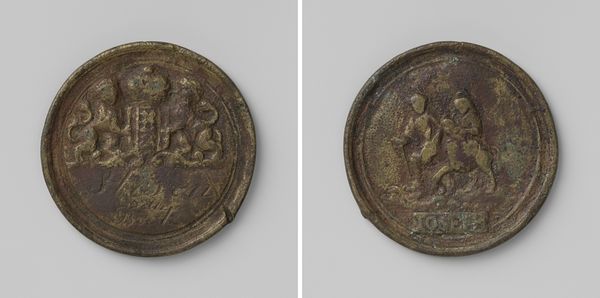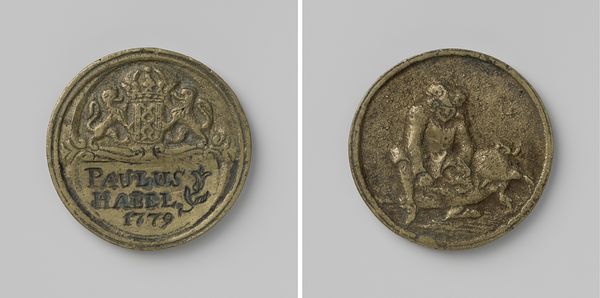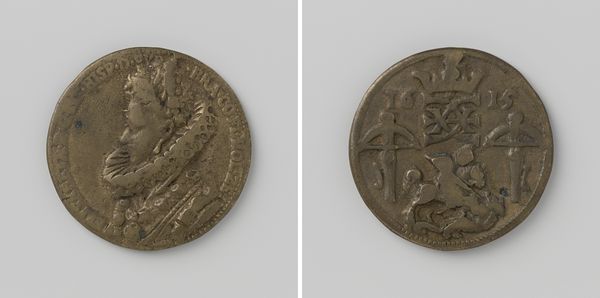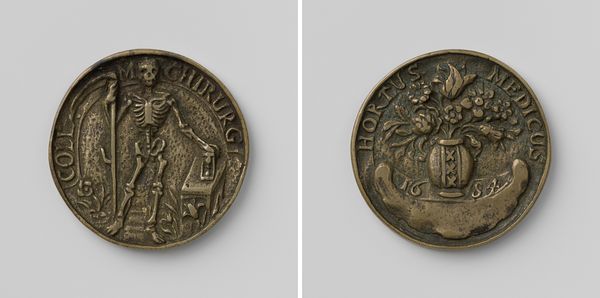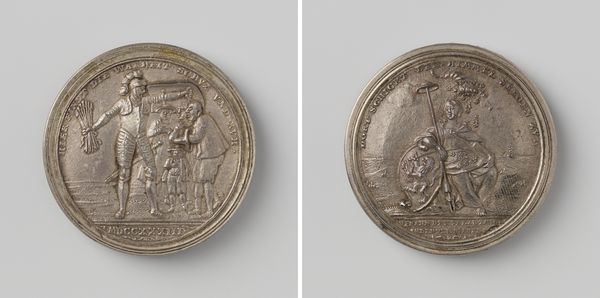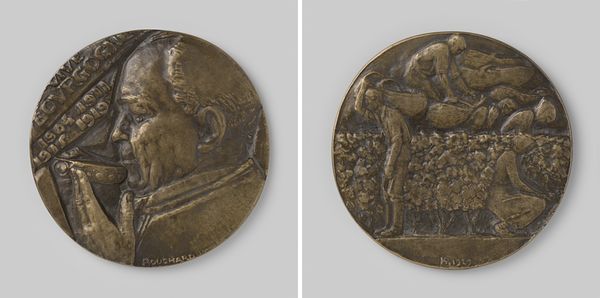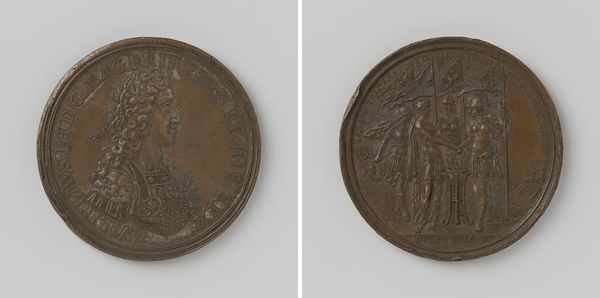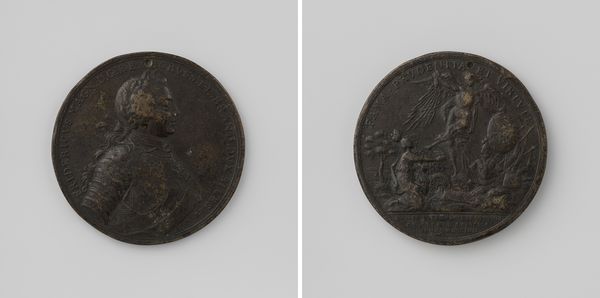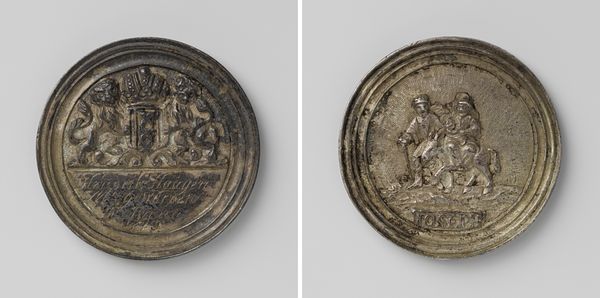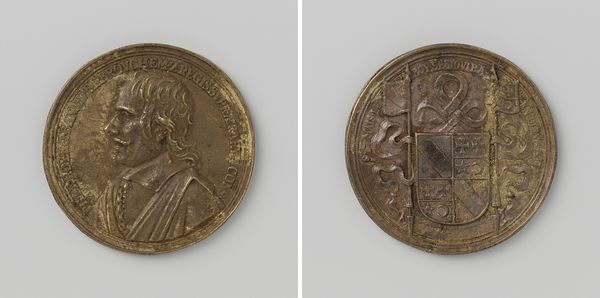
Dimensions: diameter 4.5 cm, weight 26.80 gr
Copyright: Rijks Museum: Open Domain
Curator: Here we have the Surgeon's Guild Medal of Amsterdam by A.D. Ham, crafted in 1776 from bronze. What are your first thoughts? Editor: It’s quite striking! The imagery is dominated by symbols of mortality. The juxtaposition of the Surgeon’s Guild with images of death – a skeleton holding a scythe – feels somewhat morbid, but also perhaps points to the precariousness of life, especially back then. How was this medal actually used? Curator: Guild medals like these weren't just symbolic, they were integral to the guild's identity. They acted as visual pronouncements of power and legitimacy, often displayed publicly or worn during ceremonies. This specific medal cleverly uses memento mori – the vanitas symbols such as the skeleton. It reminded guild members, and by extension the public, of their role in confronting death. But, why would the Surgeon’s Guild choose to visually align itself so explicitly with death? Editor: Maybe it was meant to underscore the guild’s importance? Like, ‘we are the ones battling death itself’? It almost feels… theatrical, with that skeletal figure. Curator: Precisely! This theatricality reveals a key shift in the understanding and presentation of medicine. Think about how medicine was transforming during this period. It was becoming less about superstition and more about observable science. Displaying these images perhaps functioned as a tool in visually mediating medicine’s developing status. Editor: That makes sense. The imagery isn’t just about accepting death, but confronting it head-on with knowledge and skill. So, it served both as a reminder of mortality and a declaration of the guild's societal role? Curator: Exactly! Medals were very efficient in portraying medical credibility and its growing public power through visuals of morality. The very public displaying of power through vanitas made this medal particularly special in the societal and political time in which it was constructed. Editor: I hadn't thought of it in terms of how it was establishing power through public perception. Now I’m curious about what the non-medical public thought when they saw it! Curator: And that’s precisely the type of questions a work like this provokes! Thinking about how art functioned within specific socio-political landscapes opens up new layers of understanding.
Comments
No comments
Be the first to comment and join the conversation on the ultimate creative platform.


